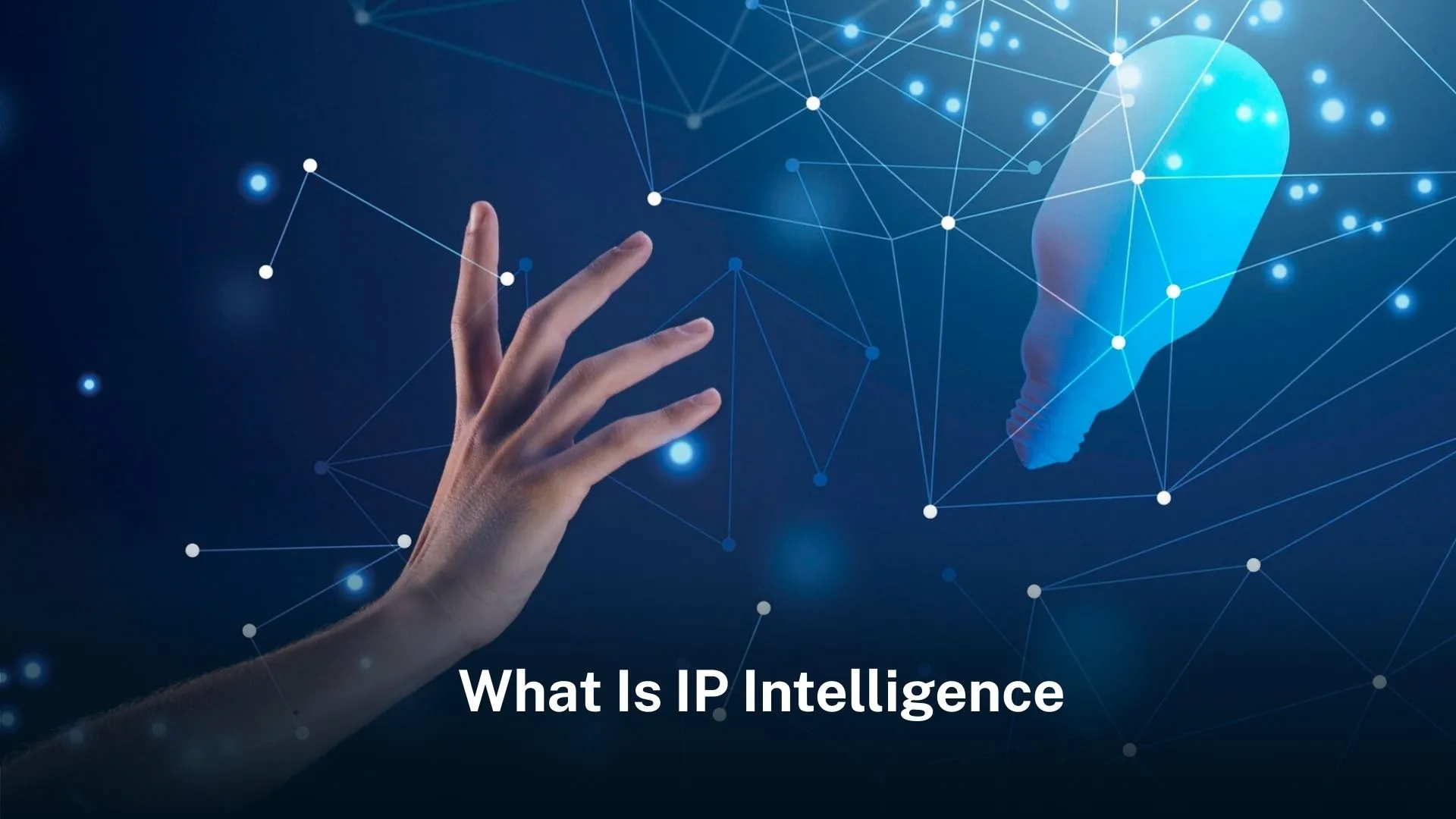IP intelligence refers to information gathered from internet protocol addresses. This data helps identify devices and their locations on networks.These addresses contain valuable details about network activity. Organizations use IP intelligence for various business purposes. The technology has become essential for online operations.
Table of Contents
ToggleIP intelligence goes beyond simple location tracking. It analyzes patterns in IP address usage. The applications continue expanding across industries.
Core Components of IP Intelligence
Geolocation data forms the foundation of IP intelligence. This identifies the physical location of devices. The system maps IP addresses to countries and cities. Accuracy levels vary depending on data sources. Some services can pinpoint locations within meters. Others provide only general regional information.
Network characteristics represent another key component. This includes internet service provider details. Connection types like mobile or broadband get identified. Proxy and VPN usage gets detected through analysis. These elements help build complete device profiles. The combined data creates actionable intelligence.
Data Collection Methods
IP intelligence gathers information through multiple channels. Registration records provide initial address details. Internet registries maintain ownership information. These public databases offer basic location data. They serve as starting points for deeper analysis.
Network traffic monitoring yields additional insights. Behavioral patterns emerge from connection logs. Repeated access from specific addresses gets tracked. Unusual activity triggers further investigation. The system builds comprehensive profiles over time.
Data freshness impacts IP intelligence quality. Regular updates ensure current information. Static databases quickly become outdated. Live tracking provides more reliable results. The best systems combine multiple verification methods.
Network infrastructure affects location precision. Mobile devices present particular challenges. Cellular towers may route traffic through distant locations. WiFi connections typically offer better accuracy.
Business Applications
E-commerce platforms use IP intelligence extensively. Fraud detection systems analyze purchase locations. Unusual ordering patterns trigger security reviews. The technology prevents costly chargebacks. Legitimate customers experience smoother transactions.
Content providers apply geographic restrictions. Licensing agreements often require regional blocking. IP intelligence enforces these digital borders. Streaming services customize offerings by location. The system automatically redirects users appropriately.
Security Implementations
Cybersecurity systems incorporate IP intelligence. Suspicious login attempts get flagged immediately. Known malicious addresses appear on blacklists. The technology helps prevent brute force attacks.
Marketing Advantages
Digital advertisers leverage IP intelligence for targeting. Campaigns adjust based on user locations. Localized promotions increase conversion rates. The technology helps optimize advertising budgets. Marketers achieve better return on investment.
Analytics platforms incorporate IP data. Visitor demographics become clearer through location tracking. Businesses understand customer geographic distribution. The insights guide expansion decisions. Regional preferences inform product development strategies.
Legal and Compliance Uses
Copyright enforcement relies on IP intelligence. Illegal content sharing gets tracked geographically. Rights holders identify infringement hotspots. The data supports legal actions against violators. Licensing compliance improves through monitoring.
Government agencies apply the technology for various purposes. Law enforcement tracks online criminal activity. Tax authorities verify digital business locations. Customs officials monitor cross-border e-commerce. The applications continue growing across departments.
Technical Implementation
IP intelligence systems require specialized infrastructure. Database servers store vast address information. Lookup tools process real-time queries. APIs integrate the technology with other platforms. The architecture must handle heavy traffic loads.
Cloud-based solutions dominate the market today. These offer scalability for growing businesses. Updates occur automatically across all users. Smaller organizations access enterprise-grade tools. The technology becomes affordable through subscription models.
Data Privacy Considerations
IP intelligence operates within privacy regulations. The European Union enforces strict GDPR rules. Other regions have their own compliance requirements. Providers must navigate these complex landscapes.
Anonymization techniques help address privacy concerns. Some systems discard personal identifiers. Others implement data aggregation methods.
Integration Challenges
Legacy systems often struggle with IP intelligence. Older software lacks modern API support. Custom integration projects become necessary. The process requires time and technical expertise. Migration to updated platforms solves many issues.
Data format inconsistencies create obstacles. Various providers use different structures. Normalization processes standardize the information. Dedicated middleware bridges compatibility gaps. Proper planning prevents integration headaches.
Future Development Trends
Machine learning enhances IP intelligence capabilities. Algorithms identify subtle usage patterns. Predictive analytics forecast potential threats. The systems become more proactive over time. Continuous learning improves accuracy.
5G networks introduce new considerations. Mobile device tracking grows more complex. Edge computing changes traffic routing patterns. Providers adapt their techniques accordingly. The technology evolves with network infrastructure.
Cost Factors
Pricing models vary among IP intelligence providers. Some charge per lookup request. Others offer unlimited access subscriptions. Data quality correlates with service costs. Enterprises must balance budgets with needs.
Internal development presents another option. Large organizations build proprietary systems. This requires significant technical resources. The approach offers complete control. Maintenance demands ongoing investment.
Performance Metrics
Accuracy rates measure system effectiveness. Providers publish regular testing results. Independent audits verify claims. Businesses compare options before selecting services. Real-world performance matters most.
Speed represents another critical factor. Lookup delays affect user experiences. High-traffic sites require rapid responses. Infrastructure investments reduce latency. Benchmark tests guide optimization efforts.
Industry Standards
Trade associations establish best practices. These guidelines ensure data quality. Ethical usage policies gain importance. The industry works toward self-regulation. Standardization benefits all stakeholders.
Certification programs validate provider capabilities. Independent reviews assess compliance. Businesses prefer accredited services. The markers indicate reliable performance. Continuous improvement remains essential.
Common Misconceptions
Some believe IP intelligence invades privacy excessively. Modern systems focus on aggregate data. Individual tracking remains limited. The technology primarily supports business functions. Others assume the technology provides perfect accuracy. Reality involves reasonable approximations. Multiple factors influence precision levels. Understanding limitations prevents unrealistic expectations. Clear communication manages user perceptions.
Implementation Best Practices
Gradual rollout reduces operational risks. Pilot programs test system capabilities. Staff training ensures proper utilization. Feedback loops identify improvement areas. Phased approaches yield better results.
Data quality monitoring maintains standards. Regular audits verify information accuracy. Correction mechanisms address discrepancies. Continuous validation protects decision quality.
Retail banks apply IP intelligence extensively. Fraud prevention drives implementation. The technology secures online banking platforms. Customer trust grows through enhanced protection. Financial losses decrease significantly.
Healthcare organizations adopt similar measures. Patient portal security improves. Unauthorized access attempts get blocked. Sensitive medical data remains protected. Compliance with regulations becomes easier.
Technical Limitations
Dynamic IP addresses present challenges. These change periodically for users. Tracking consistency suffers as a result. Systems must accommodate this fluidity. Advanced techniques mitigate the issues.
IPv6 adoption changes the landscape. The expanded address space alters tracking methods. Providers update their approaches accordingly. Transition periods require dual-protocol support. Long-term solutions emerge gradually.
User Experience Impacts
Website personalization improves through IP intelligence. Localized content resonates better. Language preferences get detected automatically. Currency displays adjust appropriately. Visitors enjoy more relevant experiences.
Security measures sometimes inconvenience users. Additional authentication steps may occur. Most accept these tradeoffs for protection. Clear communication maintains satisfaction. Balance remains key to implementation.
Data Source Diversity
Commercial providers supply most IP intelligence. These companies maintain extensive databases. Some specialize in specific regions. Others offer global coverage. Quality varies significantly between vendors.
Public sources contribute supplementary data. Internet registries provide foundational information. Network operators share routing details. Collaborative projects enhance completeness. Multiple sources improve overall reliability.
Analytical Techniques
Pattern recognition identifies suspicious activity. Unusual login locations trigger alerts. The systems learn normal usage behaviors. Deviations from baselines get flagged. Automated responses prevent breaches.
Correlation analysis links related events. Multiple attacks from similar addresses become apparent. The intelligence guides defensive strategies. Historical comparisons reveal emerging trends. Proactive measures become possible.
Customization Options
Businesses tailor IP intelligence to specific needs. Risk thresholds adjust for different applications. Financial services require strict settings. Media companies may prefer flexibility. Configurable parameters accommodate variations.
Reporting formats adapt to organizational requirements. Executive summaries highlight key metrics. Technical teams receive detailed analyses. Custom dashboards visualize important data. The system serves diverse user needs.
Vendor Selection Criteria
Data accuracy tops evaluation checklists. Prospective clients verify provider claims. Testing periods demonstrate real capabilities. Comparative assessments identify best fits. Decision factors extend beyond pricing.
Support services influence choices. Responsive assistance resolves issues quickly. Documentation quality affects implementation. Training resources smooth onboarding. Long-term partnerships consider all aspects.
Implementation Timelines
Basic integration may require weeks. Complex deployments can take months. Data migration demands careful planning. Staff training ensures proper utilization. Realistic schedules prevent frustration.
Ongoing optimization never truly ends. Regular updates incorporate improvements. New features get added periodically. The systems evolve with business needs. Continuous enhancement maintains value.
Return on Investment
Fraud reduction delivers direct savings. Chargeback decreases improve profitability. The technology pays for itself quickly. Prevention costs less than remediation. Financial justification becomes clear.
Operational efficiencies provide secondary benefits. Automated processes reduce labor requirements. Decision-making gains speed and accuracy. The cumulative impact justifies expenditures. Comprehensive evaluations capture full value.
Employee Training Needs
Technical staff require in-depth instruction. System administration demands specific skills. Troubleshooting capabilities get developed. End users need awareness training. Policy explanations promote compliance. Best practice guidance improves outcomes. Security consciousness grows through education. Organizational culture adapts accordingly.
New address allocations get incorporated. Changing network topologies require tracking. Maintenance schedules ensure consistency. Automated processes handle routine tasks.
Performance monitoring identifies degradation. Capacity planning prevents bottlenecks. Hardware refreshes maintain responsiveness. The infrastructure demands ongoing attention. Neglect risks system obsolescence.
Data Visualization Techniques
Geographic mapping displays location patterns. Heat maps highlight concentration areas. The visual formats communicate effectively. Decision-makers grasp situations quickly. Interactive tools enable deeper exploration.
Temporal graphs reveal usage trends. Peak activity periods become apparent. Seasonal variations show clearly. Forecasting becomes more reliable. Visual analytics enhance understanding.
Regulatory Compliance Aspects
.Audit trails document access and usage. Compliance reporting demonstrates adherence.
Cross-border data flows require special attention. Some countries restrict information transfer. The systems must accommodate these rules. Legal reviews ensure proper configurations. International operations demand particular care.
System Architecture Options
On-premises installations offer full control. Organizations manage all components internally. The approach suits security-conscious enterprises. Resource requirements remain significant. Hybrid models provide flexibility.
Cloud-based services reduce infrastructure needs. Providers handle maintenance and updates. Scalability meets fluctuating demands. Subscription models align costs with usage. The convenience drives widespread adoption.
Integration with Other Systems
Security information systems benefit greatly. Combined data enhances threat detection. The holistic view improves situational awareness. Response coordination becomes more effective. Unified platforms deliver comprehensive protection.
Customer relationship platforms incorporate IP data. Marketing automation gains precision. Sales teams receive location-based leads. Service personalization improves. The synergies create competitive advantages.
Error Handling Procedures
Data discrepancies require investigation. Verification processes confirm accuracy. Correction mechanisms maintain integrity. Error logs document all incidents. Root cause analysis prevents recurrences.
User reports supplement automated monitoring. Feedback channels remain open. Responsive support addresses concerns quickly. Continuous improvement cycles enhance reliability. System credibility grows over time.
Benchmarking Practices
Industry comparisons assess relative performance. Metrics quantify effectiveness gaps. Improvement targets get established. Progress tracking ensures accountability. Competitive positioning becomes clearer.
Internal benchmarks measure growth. Strategic planning gains factual foundations. Data-driven approaches prevail.
Disaster Recovery Planning
Redundant systems ensure availability. Backup procedures protect against data loss. Failover mechanisms maintain operations. The preparations minimize downtime impacts. Business continuity remains assured.
Testing validates recovery capabilities. Simulated outages reveal weaknesses. Refinements strengthen resilience. Preparedness levels improve progressively. Risk management becomes proactive.
User Privacy Protections
Data minimization principles get applied. Only necessary information gets collected. Retention periods remain limited. Anonymization techniques protect identities. Privacy by design guides development.
Transparency builds user trust. Clear policies explain practices. Consent mechanisms respect preferences. User controls enable personal choices. Ethical standards govern operations.
Market Differentiation Strategies
Specialization serves niche segments effectively. Geographic expertise attracts certain clients. Unique data sets create competitive edges. Value-added services enhance offerings.
New applications address emerging needs. Technology advancements improve capabilities. The differentiation sustains market relevance. Continuous evolution remains essential.




Pingback: Will IPv6 Change the IP Intelligence Game? - NRS
This is a perfect example of quality content. You can tell that plenty of thought when into this post. Nice work.
Magnificent goods from you, man. I have understand your stuff previous to and you’re just extremely great. I really like what you have acquired here, certainly like what you’re saying and the way in which you say it. You make it entertaining and you still care for to keep it wise. I can’t wait to read much more from you. This is really a terrific web site.
Hey! I could have sworn I’ve been to this blog before but after browsing through some of the post I realized it’s new to me. Anyhow, I’m definitely glad I found it and I’ll be bookmarking and checking back often!
great post, very informative. I wonder why the other specialists of this sector don’t notice this. You must continue your writing. I am sure, you have a great readers’ base already!
Hello, you used to write wonderful, but the last few posts have been kinda boring? I miss your great writings. Past few posts are just a bit out of track! come on!
I’m impressed by the quality of this content! The author has obviously put a great amount of effort into researching and structuring the information. It’s refreshing to come across an article that not only offers helpful information but also keeps the readers hooked from start to finish. Kudos to him for creating such a remarkable piece!
Wow, superb blog layout! How long have you been blogging for? you make blogging look easy. The overall look of your web site is magnificent, as well as the content!
Hi there! Would you mind if I share your blog with my myspace group? There’s a lot of people that I think would really enjoy your content. Please let me know. Thank you
It?s actually a great and helpful piece of information. I?m glad that you shared this helpful info with us. Please keep us up to date like this. Thanks for sharing.
I’m not that much of a internet reader to be honest but your sites really nice, keep it up! I’ll go ahead and bookmark your website to come back in the future. Many thanks
Great post however , I was wondering if you could write a litte more on this topic? I’d be very thankful if you could elaborate a little bit further. Thanks!
Wow! This can be one particular of the most useful blogs We have ever arrive across on this subject. Actually Excellent. I’m also an expert in this topic therefore I can understand your hard work.
This design is wicked! You most certainly know how to keep a reader amused. Between your wit and your videos, I was almost moved to start my own blog (well, almost…HaHa!) Great job. I really loved what you had to say, and more than that, how you presented it. Too cool!